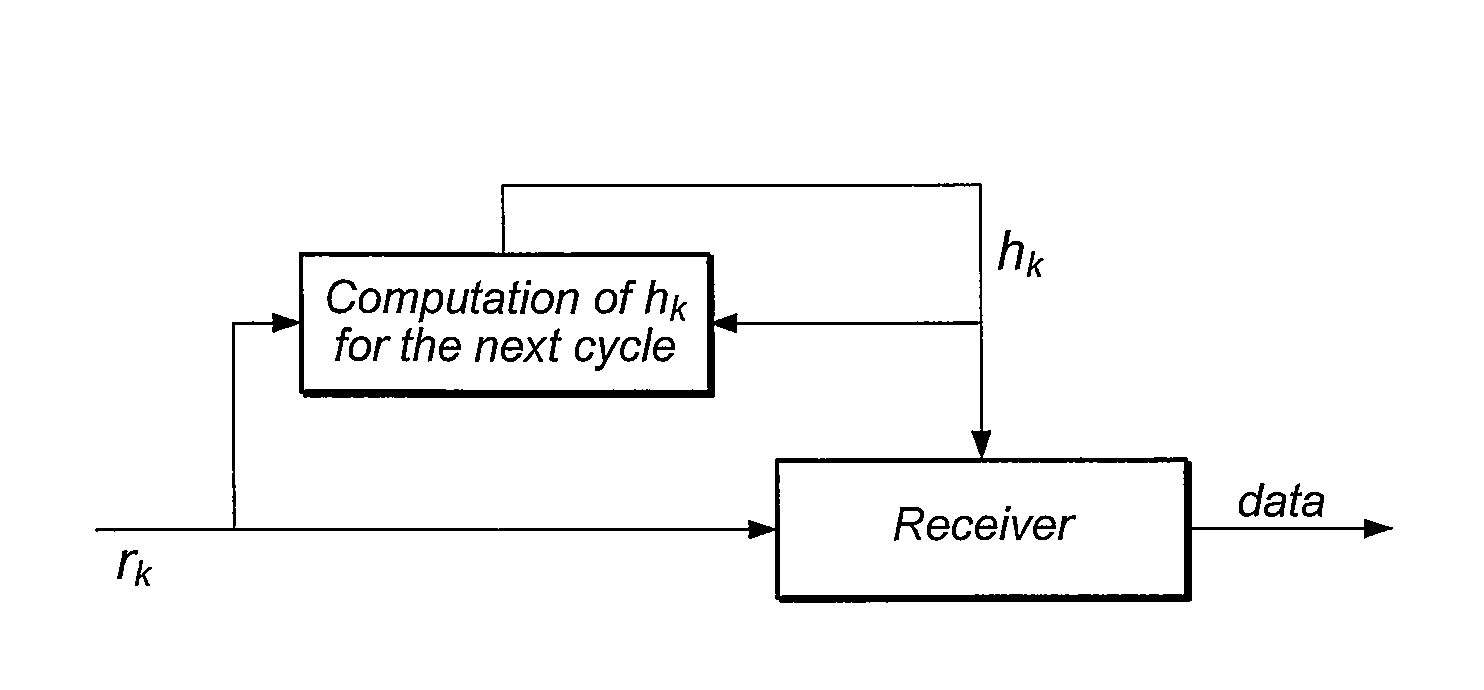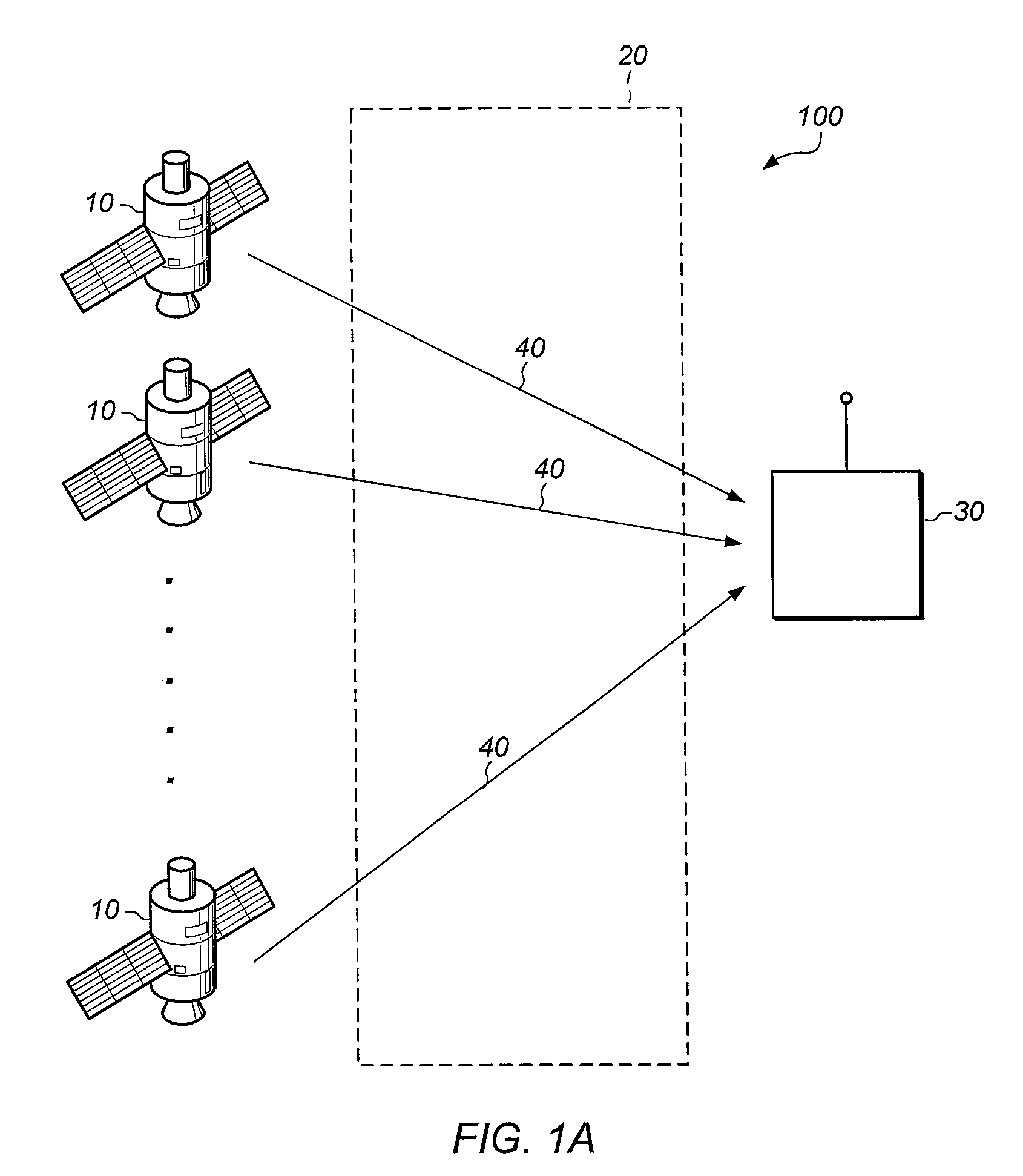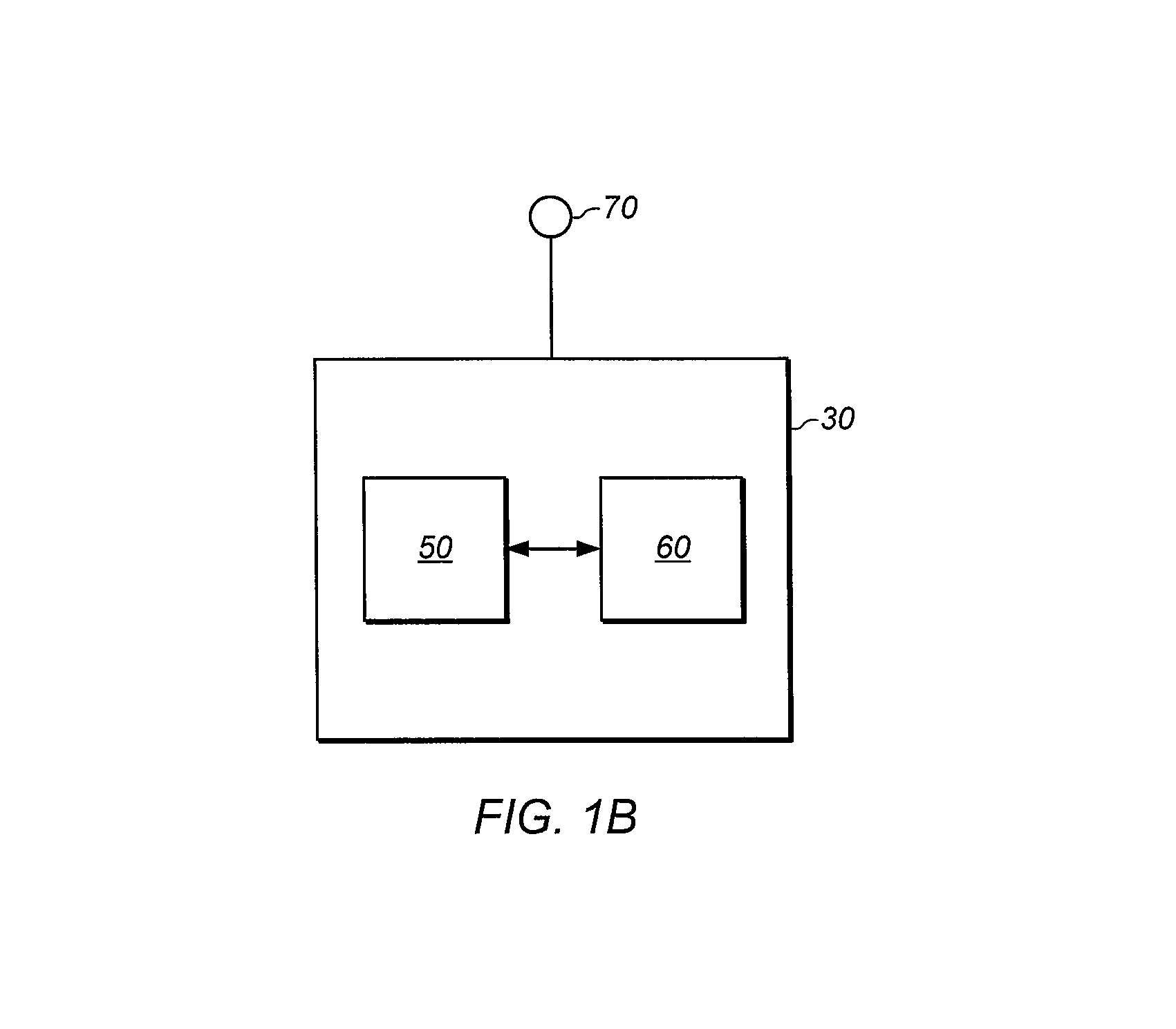Crosscorrelation interference mitigating position estimation systems and methods therefor
a position estimation and cross correlation technology, applied in the field of satellite communications, can solve the problems of loss of signal, repeated acquisition process, inability to robustly operate, etc., and achieve the effect of reducing interferen
- Summary
- Abstract
- Description
- Claims
- Application Information
AI Technical Summary
Benefits of technology
Problems solved by technology
Method used
Image
Examples
Embodiment Construction
I. Introduction
[0026]The following discloses embodiments of a system and method directed to reduced complexity adaptive despreading code design for GPS receivers
[0027]As discussed in more detail below, certain embodiments are directed to reduce complexity of algorithms for improved operation of Global Positioning System (GPS) receivers in weak signal conditions. This is based on the modification of despreading codes in receiver channels tracking weak signals to minimize the interference caused by stronger satellite signals. This interference may be due to diverse dispersions in indoor propagation channels and may be similar to near-far effects observed in CDMA systems. The analytical solutions are based on the convex optimization theory where the mean squared error (MSE) is regarded as a convex cost function in the despreading code. First, an adaptive algorithm is derived to avoid autocorrelation matrix inversions required by the conventional minimum mean squared error (MMSE) approa...
PUM
 Login to View More
Login to View More Abstract
Description
Claims
Application Information
 Login to View More
Login to View More - R&D
- Intellectual Property
- Life Sciences
- Materials
- Tech Scout
- Unparalleled Data Quality
- Higher Quality Content
- 60% Fewer Hallucinations
Browse by: Latest US Patents, China's latest patents, Technical Efficacy Thesaurus, Application Domain, Technology Topic, Popular Technical Reports.
© 2025 PatSnap. All rights reserved.Legal|Privacy policy|Modern Slavery Act Transparency Statement|Sitemap|About US| Contact US: help@patsnap.com



